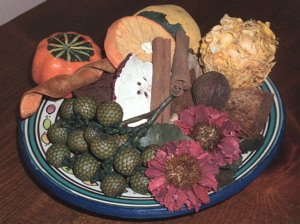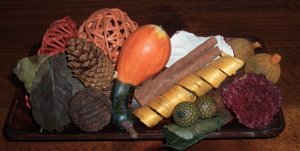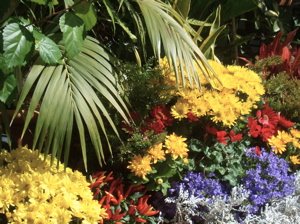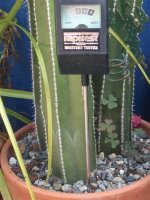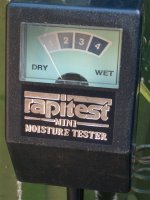ornamental peppers (capsicum annum)
 The pepper plant originated in tropical America and is known botanically as capsicum annum. It is also sometimes known as a Christmas pepper, as large quantities are sold in December as a holiday plant because of its traditional coloring.
The pepper plant originated in tropical America and is known botanically as capsicum annum. It is also sometimes known as a Christmas pepper, as large quantities are sold in December as a holiday plant because of its traditional coloring.  The cone-shaped minature peppers change color as they ripen, and yellow, red and purple fruits are sometimes found on one plant. The fruits are usually edible, but the labelling for the plant should be checked first, and they are very hot! These are relatively simple plants to grow either indoors or outdoors, depending on where you live. The main ingredients for success with this plant are light and evenly moist soil at all times. Once the fruits form they remain attractive for 2-3 months.
The cone-shaped minature peppers change color as they ripen, and yellow, red and purple fruits are sometimes found on one plant. The fruits are usually edible, but the labelling for the plant should be checked first, and they are very hot! These are relatively simple plants to grow either indoors or outdoors, depending on where you live. The main ingredients for success with this plant are light and evenly moist soil at all times. Once the fruits form they remain attractive for 2-3 months.Capsicum Annum Facts
Bloom time: September through December.
Exposure: Brightly lit spot with morning or afternoon sun.
Soil: Well drained potting soil.
Average Size: Less than 12 inches for ornamental plants.
Temperature: Cool or average warmth, not less than 55 degrees F.
Water: Keep compost moist at all times. Water occasionally by the immersiion method.
Air humidity: Mist the leaves frequently. Hot dry air will cause the fruit to fall.
Pruning: Pick peppers when they reach full size. Plants are usually discared after flowering.
These plants make an inexpensive addition to any yard or patio, and look great indoors to brighten a gloomy day!
